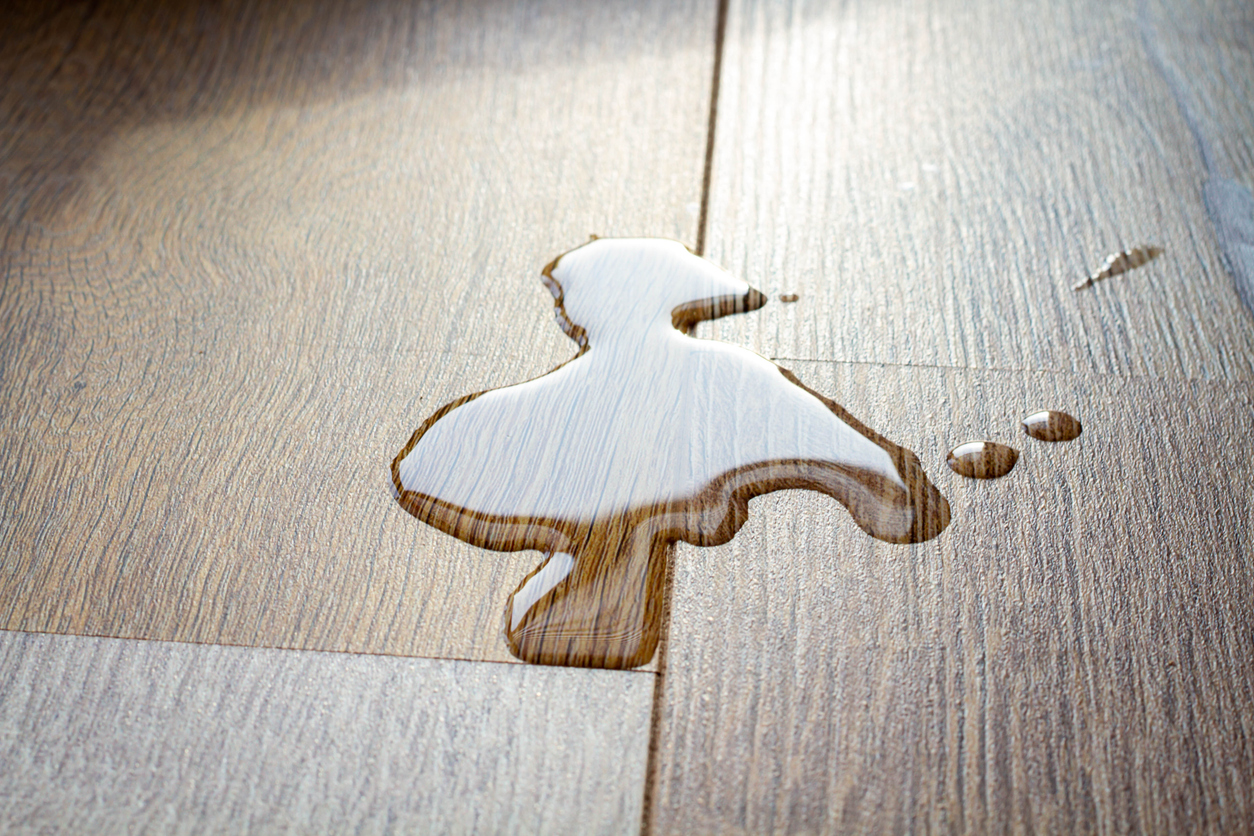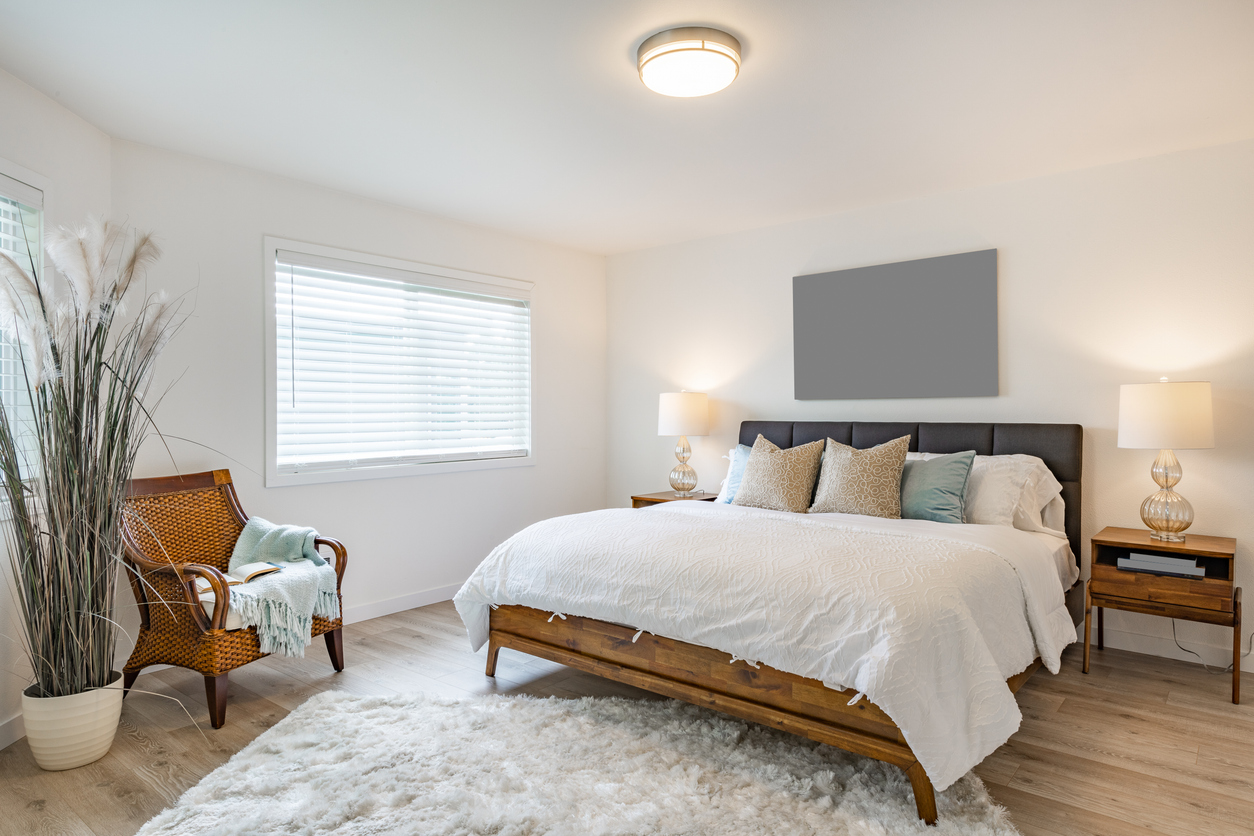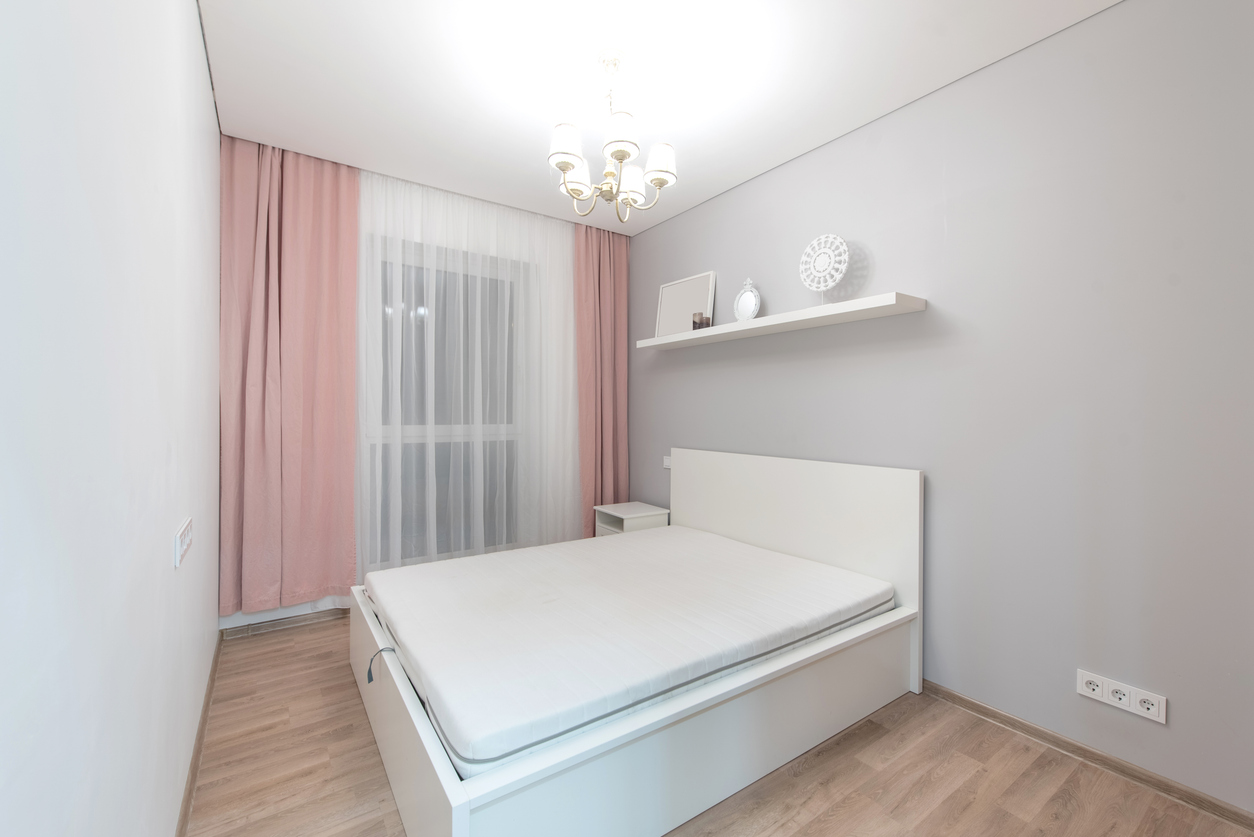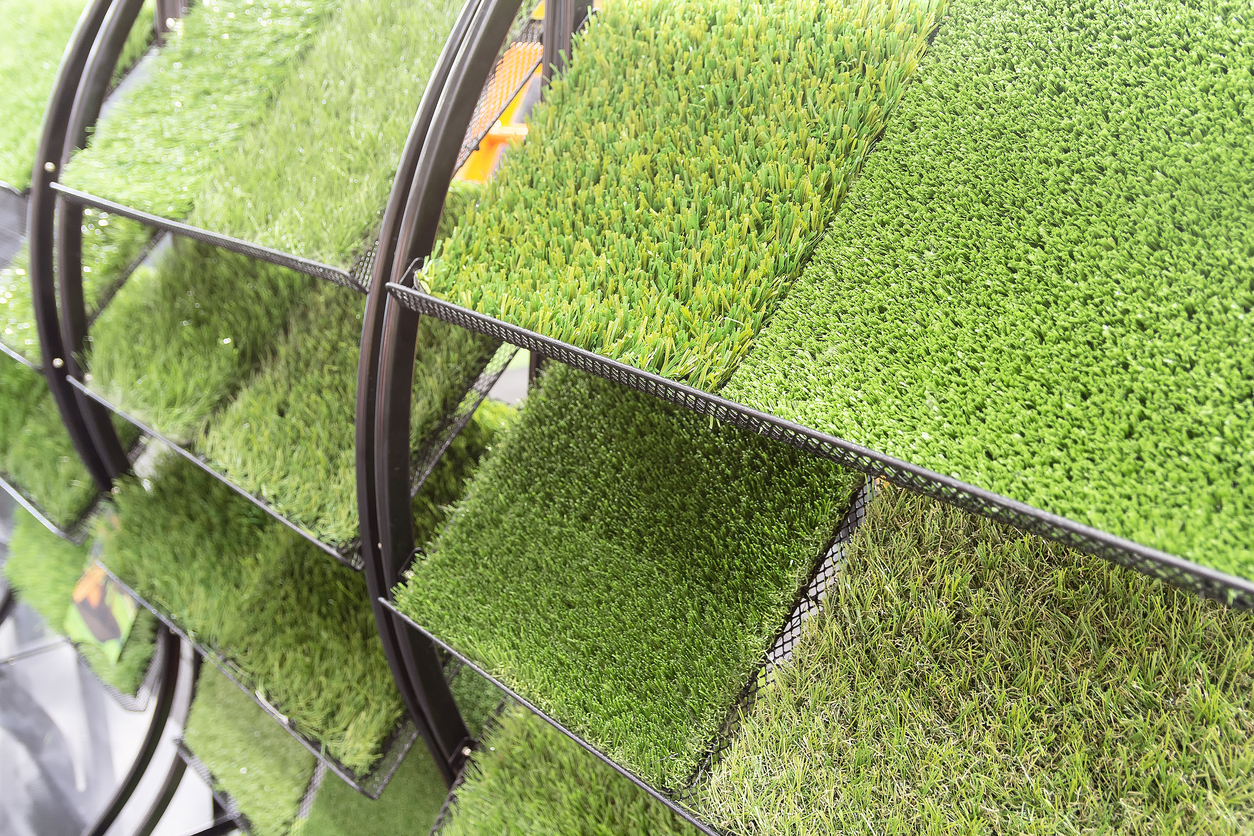Waterproof vs water-resistant laminate – is there a difference? In short, yes, there is. Waterproof laminate costs more, but you get much more in return.
Whether it’s worth the investment for your home or business depends on several factors – mostly where you’re installing it and what you need from your floors.
In this article, we’ll explain the differences and the pros and cons of waterproof vs water-resistant laminate flooring to help you make the right choice.
Waterproof vs Water-Resistant Laminate Flooring: What’s the Difference?
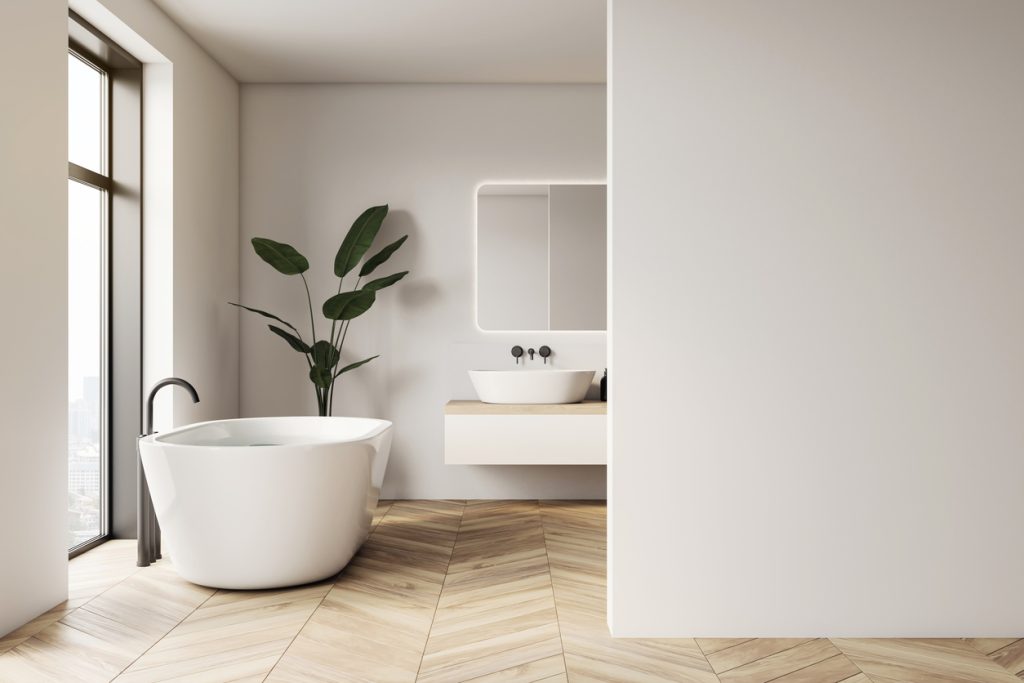
Water-resistant laminate flooring is made from high-density fibreboard (a wood-like material) and has a water-repellent coating. If a small spill is cleaned away quickly, there won’t be any damage. This is because the surface can prevent water from seeping through the joints, but only for a short time.
On the flip side, waterproof laminate is made from composite or PVC, which is unlikely to be damaged if water gets into it. It also has a fully waterproof coating and fewer seams, which protects floors even if the spill is large or sits on the surface for a long time.
Pros and Cons of Water-Resistant Laminate
Pros of water-resistant laminate include:
- It’s suitable for kitchens, living areas, and bedrooms
- It’s cheaper than waterproof laminate
- It resists water for a short time
- Spills are unlikely to cause damage if they’re cleaned up quickly
Cons of water-resistant laminate include:
- Spills must be wiped away as soon as they happen
- Leaving water on the surface for too long can cause damage
- It can struggle to resist large spills – water can seep through the joints and cause warping (we suggest using a dehumidifier to help the floors dry and to prevent any long-term damage)
Pros and Cons of Waterproof Laminate
Pros of waterproof laminate include:
- The floors are unlikely to be damaged by spillages
- Spills don’t have to be cleaned as quickly
- It can resist large spillages (like washing machine floods)
- It’s suitable for bathrooms, utility rooms, and any other living space that experiences high humidity or excess water
Cons of waterproof laminate include:
- It’s more expensive
- It requires good installation to ensure it’s fully protected
- It isn’t always worth the investment in rooms with low spillage risks (like bedrooms or hallways)
Summary – Shop Laminate Flooring Today
Laminate flooring is affordable, stylish, and easy to lay by yourself. Whether you’re choosing water-resistant or waterproof laminate, these long-lasting floors are a great choice for family homes or commercial spaces.
Get a quote today from Floor Express, your trusted supplier of cheap waterproof laminate in Manchester, or book a free measurement for your home now.
FAQs
Is Water-Resistant Laminate OK for a Bathroom?
Generally, we wouldn’t recommend water-resistant laminate flooring in a bathroom, unless you’re installing a 24-hour water-resistant laminate flooring. Otherwise, waterproof laminate is a better option as it offers more protection against spills and humidity (caused by showering).
Non-slip laminate is the best option for bathrooms. Available in tile-effect or marble-effect, as well as the popular wood-look, it’s a cheap, waterproof laminate flooring that’s both safe and effective.
Waterproof laminate can be laid in a bathroom, but you must install it properly to ensure it’s fully sealed. It’s also a good idea to use a waterproof underlay to protect the subfloor from moisture damage.
You can also lay an alternative like waterproof luxury vinyl flooring in a bathroom. This looks similar to laminate, but is made from composite to deliver more water-resilience.
Can Water Get Under Waterproof Laminate Flooring?
Yes, water can still get underneath waterproof laminate if a large spill happens, but its construction is designed to make it very difficult for water to seep through the joints.
If water gets beneath waterproof laminate, it can damage the subfloor and cause rotting of your floorboards. Using a good underlay and installing the laminate properly can prevent damage.
Cleaning large spills quickly is also a good idea, even if the laminate is waterproof. You can also place a dehumidifier in the area to help any water beneath the surface dry.

